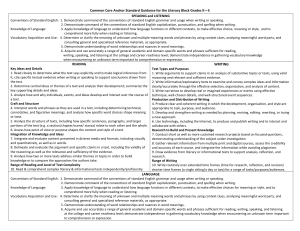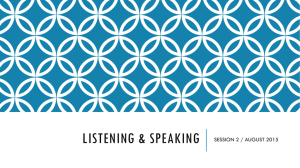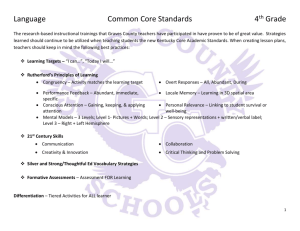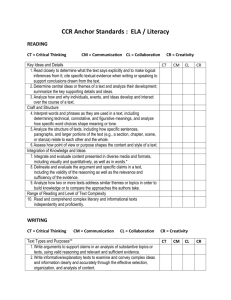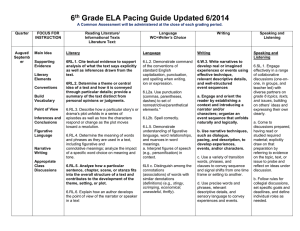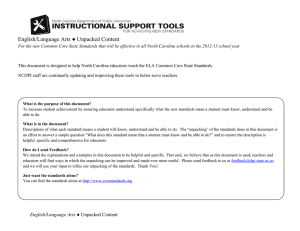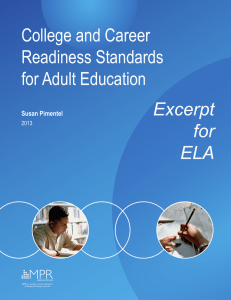Anchor Standards for Language - Lewiston Independent School
advertisement
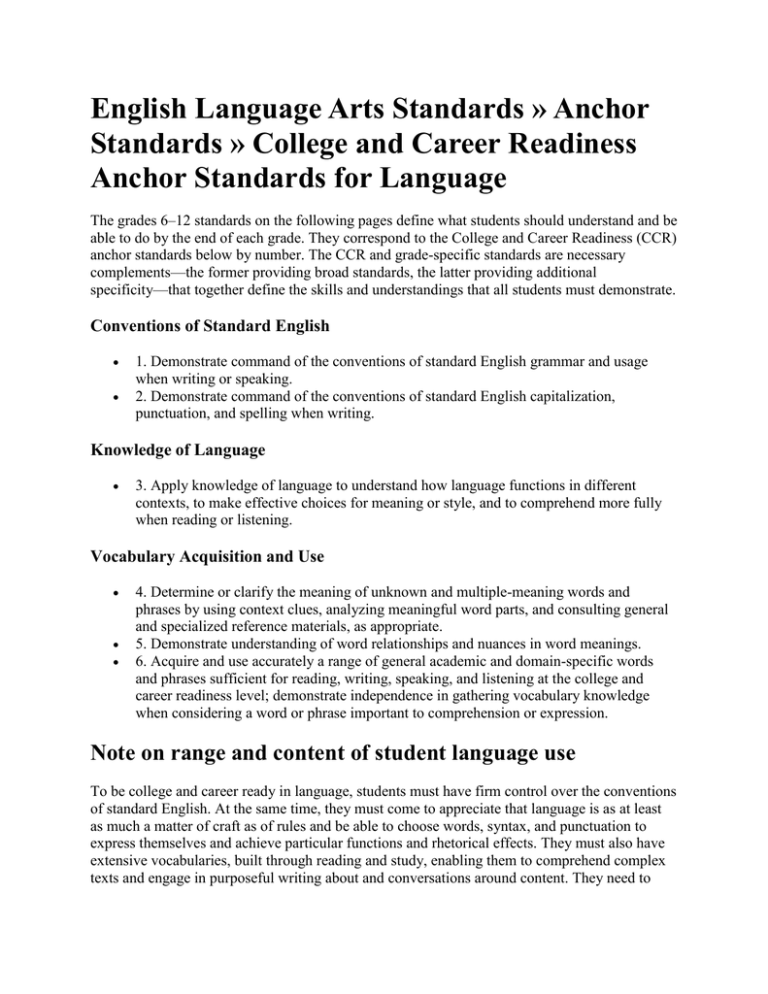
English Language Arts Standards » Anchor Standards » College and Career Readiness Anchor Standards for Language The grades 6–12 standards on the following pages define what students should understand and be able to do by the end of each grade. They correspond to the College and Career Readiness (CCR) anchor standards below by number. The CCR and grade-specific standards are necessary complements—the former providing broad standards, the latter providing additional specificity—that together define the skills and understandings that all students must demonstrate. Conventions of Standard English 1. Demonstrate command of the conventions of standard English grammar and usage when writing or speaking. 2. Demonstrate command of the conventions of standard English capitalization, punctuation, and spelling when writing. Knowledge of Language 3. Apply knowledge of language to understand how language functions in different contexts, to make effective choices for meaning or style, and to comprehend more fully when reading or listening. Vocabulary Acquisition and Use 4. Determine or clarify the meaning of unknown and multiple-meaning words and phrases by using context clues, analyzing meaningful word parts, and consulting general and specialized reference materials, as appropriate. 5. Demonstrate understanding of word relationships and nuances in word meanings. 6. Acquire and use accurately a range of general academic and domain-specific words and phrases sufficient for reading, writing, speaking, and listening at the college and career readiness level; demonstrate independence in gathering vocabulary knowledge when considering a word or phrase important to comprehension or expression. Note on range and content of student language use To be college and career ready in language, students must have firm control over the conventions of standard English. At the same time, they must come to appreciate that language is as at least as much a matter of craft as of rules and be able to choose words, syntax, and punctuation to express themselves and achieve particular functions and rhetorical effects. They must also have extensive vocabularies, built through reading and study, enabling them to comprehend complex texts and engage in purposeful writing about and conversations around content. They need to become skilled in determining or clarifying the meaning of words and phrases they encounter, choosing flexibly from an array of strategies to aid them. They must learn to see an individual word as part of a network of other words—words, for example, that have similar denotations but different connotations. The inclusion of Language standards in their own strand should not be taken as an indication that skills related to conventions, effective language use, and vocabulary are unimportant to reading, writing, speaking, and listening; indeed, they are inseparable from such contexts. New technologies have broadened and expanded the role that speaking and listening play in acquiring and sharing knowledge and have tightened their link to other forms of communication. The Internet has accelerated the speed at which connections between speaking, listening, reading, and writing can be made, requiring that students be ready to use these modalities nearly simultaneously. Technology itself is changing quickly, creating a new urgency for students to be adaptable in response to change.
